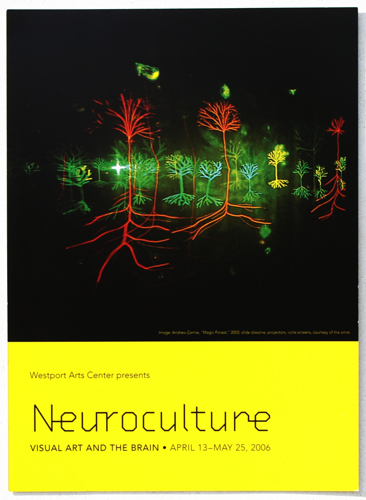Week 7 Blog
Week 7 Blog
At the same time as I am reviewing this weeks material about the mind and consciousness in this class, in anatomy I have been studying the inner workings of the brain and memorizing structures. What has really struck me about this is that the very structures I am ingraining in my mind and understanding are the ones I am using in order to study them. It is crazy how the brain and conscious mind give us perspective on the world and existence, but are also anatomical structures allowing survival.

My diagram I used to memorize the major areas of brain
Through the lectures and readings, I was stimulated by so many topics I could ramble on for hours. I particularly liked Giovanni Frazzetto and Suzanne Anker’s concept of “Neuroculture” as a framework by which, “neuroscience knowledge partakes in our daily lives, social practices and intellectual discourses” (Frazetto, Anker 815). I think this is a great concept and way to approach our own existence and participation in society, as cognizant beings who are aware of complex processes in our brains that make us both emotional and rational people. Anker and Frazzetto use Neuroculture as the title of their exhibition in the Westport Arts Center, connecting visual art and the brain.

http://cottageindustriesdesign.com/hello/work/wac-exhibitions
The use of “Brainbow” discussed in lecture and described by Livet et. al as,“genetic method to label each individual nerve cell a different color” is stunningly beautiful in my opinion (Livet et. al). The complexity of what the images show is the aesthetically pleasing aspect, as well as intellectually pleasing. The myriad of colors highlighting each feature is visually wonderful, and the knowledge that what you are seeing art the intricate building blocks of the brain makes it even better. I think it is fascinating to think that the very brain processes that make me interpret this image as beautiful, is what is actually shown in the art.

At the same time as I am reviewing this weeks material about the mind and consciousness in this class, in anatomy I have been studying the inner workings of the brain and memorizing structures. What has really struck me about this is that the very structures I am ingraining in my mind and understanding are the ones I am using in order to study them. It is crazy how the brain and conscious mind give us perspective on the world and existence, but are also anatomical structures allowing survival.
My diagram I used to memorize the major areas of brain
Through the lectures and readings, I was stimulated by so many topics I could ramble on for hours. I particularly liked Giovanni Frazzetto and Suzanne Anker’s concept of “Neuroculture” as a framework by which, “neuroscience knowledge partakes in our daily lives, social practices and intellectual discourses” (Frazetto, Anker 815). I think this is a great concept and way to approach our own existence and participation in society, as cognizant beings who are aware of complex processes in our brains that make us both emotional and rational people. Anker and Frazzetto use Neuroculture as the title of their exhibition in the Westport Arts Center, connecting visual art and the brain.
http://cottageindustriesdesign.com/hello/work/wac-exhibitions
The use of “Brainbow” discussed in lecture and described by Livet et. al as,“genetic method to label each individual nerve cell a different color” is stunningly beautiful in my opinion (Livet et. al). The complexity of what the images show is the aesthetically pleasing aspect, as well as intellectually pleasing. The myriad of colors highlighting each feature is visually wonderful, and the knowledge that what you are seeing art the intricate building blocks of the brain makes it even better. I think it is fascinating to think that the very brain processes that make me interpret this image as beautiful, is what is actually shown in the art.
http://cbs.fas.harvard.edu/science/connectome-project/brainbow#
Sources
“Brainbow.” Color Vision in Drosophila | Center for Brain Science, cbs.fas.harvard.edu/science/connectome-project/brainbow.
Frazzetto, Giovanni, and Suzanne Anker. “Neuroculture.” Nature Reviews Neuroscience, vol. 10, no. 11, 2009, pp. 815–821., doi:10.1038/nrn2736.
Vesna, Victoria. “Conscious / Memory (Part 1).” Lecture. 16 Nov 2012. <http://www.youtube.com/ watch?feature=player_embedded&v=DLVQIwOn7o8>
Vesna, Victoria. Lecture. “Conscious / Memory (Part 2).” 16 Nov 2012. <http://www.youtube.com/ watch?feature=player_embedded&v=Xlg5wXHWZNI>
Vesna, Victoria. Lecture. “Conscious / Memory (Part 3).” 16 Nov 2012. <http://www.youtube.com/ watch?feature=player_embedded&v=E5EX75xoBJ0>
Wac Exhibitions :: Cottage Industries :: Graphic Design Studio, cottageindustriesdesign.com/hello/work/wac-exhibitions.
I also share your opinion on how fascinating the study of the brain is, since it is basically the mind trying to understand itself. I liked the way you described the significance of neuroculture, and I agree that having an awareness of the parts and processes of our brains, and what makes us the advanced thinking beings that we are as humans, allows us to have a greater understanding of our existence and place in society.
ReplyDelete